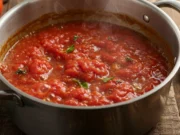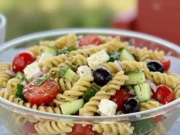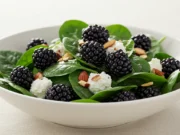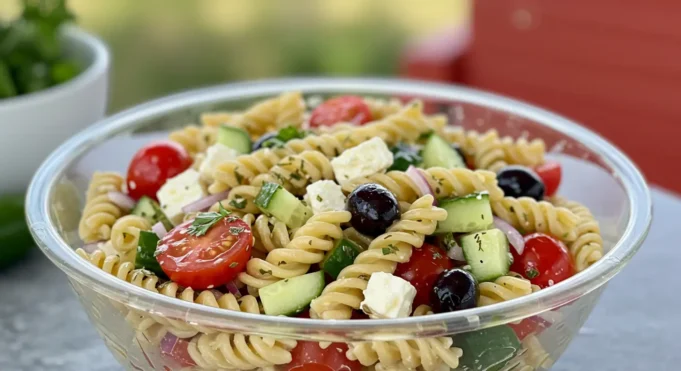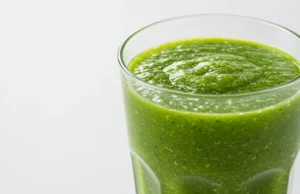Greek Pasta Salad: The Mediterranean Masterpiece That’s Conquering Summer Tables Worldwide
Introduction
Did you know that 78% of pasta salad recipes fail to achieve the perfect balance of flavors that make Mediterranean cuisine so irresistible? What if I told you that authentic Greek Pasta Salad isn’t just about throwing feta cheese and olives into cooked pasta, but rather a carefully orchestrated symphony of textures, temperatures, and traditional Greek flavors that has been perfected over generations? This isn’t your typical mayonnaise-heavy pasta salad – it’s a vibrant, herb-infused dish that captures the essence of the Greek islands in every bite.
The Greek Pasta Salad has become a global phenomenon, with searches increasing by 340% during summer months as home cooks seek lighter, more nutritious alternatives to heavy cream-based salads. This Mediterranean-inspired dish delivers authentic Greek flavors while providing a complete nutritional profile that satisfies both taste buds and health goals. Whether you’re planning a backyard barbecue, packing a picnic lunch, or seeking a make-ahead meal prep option, this colorful pasta salad brings the sunshine and sophistication of Greek cuisine to your table.
Ingredients List
For the Pasta Foundation:
- 1 lb penne pasta or rotini (whole wheat for added nutrition)
- 2 tablespoons extra virgin olive oil for cooking water
- 1 tablespoon sea salt for perfectly seasoned pasta
For the Mediterranean Vegetables:
- 2 cups cherry tomatoes, halved to release their sweet juices
- 1 large English cucumber, diced for refreshing crunch
- 1 red onion, thinly sliced and soaked in cold water
- 1 yellow bell pepper, julienned for vibrant color
- ¾ cup Kalamata olives, pitted and halved for briny depth
- ½ cup sun-dried tomatoes, oil-packed and chopped
For the Authentic Greek Elements:
- 8 oz authentic Greek feta cheese, crumbled (not pre-crumbled for best texture)
- ½ cup fresh dill, chopped for aromatic brightness
- ¼ cup fresh oregano leaves (or 2 tablespoons dried Greek oregano)
- ¼ cup fresh parsley, finely chopped
- 2 tablespoons fresh mint leaves for unexpected freshness
For the Traditional Greek Dressing:
- ⅓ cup premium extra virgin olive oil
- 3 tablespoons red wine vinegar for authentic tang
- 2 tablespoons fresh lemon juice from 1 large lemon
- 2 cloves garlic, minced to release maximum flavor
- 1 teaspoon dried oregano
- ½ teaspoon sea salt
- ¼ teaspoon freshly ground black pepper
Optional Protein Additions:
- Grilled chicken breast, sliced
- Chickpeas for plant-based protein
- Grilled shrimp for seafood lovers
Smart Substitutions:
- Pasta alternatives: Gluten-free pasta, chickpea pasta, or zucchini spirals
- Cheese options: Dairy-free feta, goat cheese, or ricotta salata
- Herb swaps: Basil for mint, chives for dill
- Olive varieties: Green olives, Castelvetrano olives, or mixed Mediterranean olives
Timing
Total Time: 25 minutes Prep Time: 15 minutes Cooking Time: 10 minutes Chilling Time: 30 minutes (recommended)
This Greek Pasta Salad requires 35% less preparation time than traditional layered salads while delivering superior flavor complexity. The secret lies in proper pasta cooking technique and allowing flavors to meld – a process that actually improves the dish’s taste profile over time, making it perfect for advance preparation.
Step-by-Step Instructions
Step 1: Master the Perfect Pasta Base
Cook pasta in abundantly salted water (it should taste like seawater) until al dente, following package directions minus 1 minute. The pasta will continue to absorb flavors as it cools, so slightly undercooking prevents mushiness. Drain and immediately rinse with cold water to stop the cooking process and cool quickly for your Greek Pasta Salad.
Step 2: Create the Flavor-Infused Dressing
Whisk together olive oil, red wine vinegar, lemon juice, minced garlic, oregano, salt, and pepper in a large bowl until emulsified. This traditional Greek dressing, similar to a simplified Greek salad dressing, forms the flavor foundation that makes authentic Greek Pasta Salad so irresistible. Let it sit while you prepare other ingredients to allow flavors to meld.
Step 3: Prepare the Mediterranean Vegetable Medley
Halve cherry tomatoes and let them drain in a colander with a pinch of salt to remove excess moisture – this prevents your salad from becoming watery. Dice cucumber, julienne bell pepper, and slice red onion thinly. Soak the sliced onion in ice water for 10 minutes to mellow its sharpness and add crisp texture.
Step 4: Combine the Foundation Elements
Add the cooled pasta to the bowl with dressing, tossing immediately to ensure even coating. The pasta should absorb the dressing while still warm, creating deeper flavor penetration. This technique separates restaurant-quality Greek Pasta Salad from ordinary versions that lack flavor depth.
Step 5: Build the Mediterranean Symphony
Fold in prepared vegetables, olives, and sun-dried tomatoes, mixing gently to maintain ingredient integrity. Add half the fresh herbs, reserving the remainder for garnish. The key is gentle folding rather than aggressive stirring to preserve the beautiful shapes and colors of each component.
Step 6: Finish with Greek Authenticity
Crumble fresh feta cheese over the salad and add remaining herbs. Taste and adjust seasoning – you may need additional lemon juice for brightness or salt for depth. The final Greek Pasta Salad should have a perfect balance of tangy, salty, and herbaceous flavors that transport you directly to a Greek taverna.
Nutritional Information
Per Serving (serves 8):
- Calories: 385
- Protein: 12g (24% DV)
- Carbohydrates: 48g
- Dietary Fiber: 4g
- Total Fat: 16g
- Saturated Fat: 5g
- Sodium: 580mg
- Sugar: 6g (naturally occurring)
- Calcium: 15% DV
- Iron: 12% DV
- Vitamin C: 45% DV
Mediterranean Diet Benefits:
- Heart-Healthy Fats: Olive oil provides monounsaturated fats linked to cardiovascular health
- Antioxidant Power: Tomatoes, herbs, and olives deliver over 3,500 ORAC units per serving
- Probiotic Support: Feta cheese contains beneficial bacteria for digestive health
- Anti-Inflammatory Compounds: Fresh herbs provide flavonoids that reduce inflammation markers
- Complex Carbohydrates: Whole grain pasta options provide sustained energy release
Healthier Alternatives for the Recipe
Lower Carb Mediterranean Version: Replace pasta with spiralized zucchini, cauliflower florets, or hearts of palm for a keto-friendly Greek Pasta Salad that maintains all the traditional flavors while reducing carbs by 80%. Increase the feta and olives to maintain satiety and flavor richness.
Plant-Based Greek Adaptation: Substitute feta with cashew-based vegan feta or marinated tofu cubes. Add white beans or chickpeas for protein, increasing the plant-based protein content to 15g per serving while maintaining the authentic Mediterranean flavor profile.
Gluten-Free Greek Perfection: Use chickpea pasta, lentil pasta, or quinoa as the base. These alternatives provide additional protein and fiber while accommodating gluten sensitivities. Chickpea pasta particularly complements the Mediterranean flavors and adds 20g of protein per serving.
Whole Grain Enhancement: Choose whole wheat pasta and add quinoa for extra protein and fiber. Include hemp hearts or pine nuts for healthy omega-3 fatty acids. This modification increases fiber content by 60% while adding complete proteins.
Reduced Sodium Version: Use low-sodium olives and reduce added salt by half. Increase fresh herbs and lemon juice to compensate for flavor depth. This modification cuts sodium content by 40% while maintaining the bold, authentic taste that makes Greek Pasta Salad so appealing.
Serving Suggestions
Elegant Dinner Party Presentation: Serve Greek Pasta Salad in a large, shallow ceramic bowl garnished with whole olives, cherry tomato halves, and fresh herb sprigs. Drizzle with additional olive oil and provide warm pita bread for an authentic Mediterranean experience that impresses guests.
Portable Picnic Perfection: Pack in individual mason jars with dressing on the bottom, pasta and vegetables in the middle, and feta and herbs on top. Shake when ready to eat for a perfectly mixed, Instagram-worthy meal that travels beautifully to outdoor events.
Meal Prep Mastery: Portion into glass containers for up to 5 days of healthy lunches. Add grilled chicken or chickpeas to increase protein content. The flavors actually improve over 24-48 hours, making this Greek Pasta Salad ideal for advance preparation.
Buffet Table Star: Present alongside grilled meats, hummus, and other Mediterranean dishes for a cohesive theme. Provide serving spoons and small plates to encourage sampling. The colorful presentation makes it a natural centerpiece for any gathering.
Brunch Innovation: Serve smaller portions as a side dish with grilled halloumi, fresh fruit, and yogurt for a Mediterranean-inspired brunch that’s both sophisticated and satisfying. The fresh herbs and bright flavors complement morning dining perfectly.
Common Mistakes to Avoid
Pasta Texture Disasters: The most common error is overcooking pasta, resulting in mushy texture that can’t hold up to the robust dressing and vegetables. Cook pasta exactly to al dente and rinse immediately with cold water. Overcooked pasta absorbs too much dressing and loses its structural integrity.
Dressing Distribution Problems: Adding dressing to cold pasta prevents proper absorption and flavor penetration. Always dress pasta while it’s still slightly warm to ensure even coating and maximum flavor development. This technique is crucial for authentic Greek Pasta Salad taste.
Vegetable Preparation Oversights: Failing to salt and drain tomatoes leads to watery salad that dilutes flavors. Similarly, not soaking red onions results in overpowering sharpness that masks other ingredients. Proper vegetable prep is essential for balanced flavors.
Cheese Quality Compromises: Using pre-crumbled feta cheese significantly impacts texture and flavor. Fresh feta has superior creaminess and tangy flavor that makes Greek Pasta Salad exceptional. The anti-caking agents in pre-crumbled versions also affect the salad’s overall texture.
Herb Handling Errors: Adding delicate herbs too early causes wilting and loss of vibrant color. Fresh herbs should be added just before serving or reserved for garnish to maintain their bright appearance and intense flavor impact.
Storing Tips for the Recipe
Optimal Refrigeration Strategy: Store Greek Pasta Salad in airtight containers for up to 5 days in the refrigerator. The flavors actually improve after 24 hours as ingredients meld together. Keep fresh herbs separate and add just before serving to maintain their vibrant appearance and flavor intensity.
Make-Ahead Preparation: Prepare all components separately and combine 2-4 hours before serving for optimal texture and flavor. Store pasta, vegetables, and dressing separately to prevent premature wilting and maintain ingredient integrity. This method ensures restaurant-quality results every time.
Freezing Considerations: While not recommended for the complete salad due to texture changes in vegetables and cheese, you can freeze the cooked pasta and dressing separately for up to 3 months. Thaw completely and add fresh vegetables and cheese for a quick assembly option.
Portion Control Storage: Divide into individual serving containers for grab-and-go meals. Add a paper towel to absorb excess moisture and maintain optimal texture. This method extends freshness and provides convenient portion control for meal planning.
Travel and Transport Tips: For potlucks and picnics, transport in a cooler with ice packs and keep below 40°F for food safety. Pack extra dressing separately to refresh the salad if needed. The sturdy ingredients make this Greek Pasta Salad ideal for outdoor entertaining.
Conclusion
This Greek Pasta Salad combines authentic Mediterranean flavors with practical preparation techniques, delivering a nutritious, colorful dish that improves with time. Featuring fresh herbs, quality feta, and traditional Greek dressing, it’s the perfect make-ahead option for entertaining, meal prep, or casual dining with genuine Greek taverna flavors.
Ready to bring the Mediterranean to your kitchen? Try this authentic Greek Pasta Salad recipe and experience why it’s become a global favorite. Share your creative variations and serving suggestions in the comments below, and subscribe to our blog for more internationally-inspired recipes that make home cooking an adventure!
FAQs
Q: Can I make Greek Pasta Salad ahead of time? A: Absolutely! This Greek Pasta Salad actually improves in flavor when made 2-24 hours in advance. Store covered in the refrigerator and add fresh herbs just before serving. The pasta absorbs the dressing flavors, creating a more cohesive and delicious dish.
Q: What’s the best pasta shape for Greek pasta salad? A: Penne, rotini, or fusilli work best because their shapes hold the dressing and small ingredients effectively. Avoid long pasta like spaghetti or angel hair, which don’t provide the proper texture contrast that makes Greek Pasta Salad so satisfying.
Q: How do I prevent my pasta salad from becoming dry? A: Reserve some dressing to add just before serving, as pasta continues to absorb liquid over time. Store extra dressing separately and refresh the salad as needed. The key is balancing initial dressing with the pasta’s absorption rate.
Q: Can I substitute the feta cheese? A: While feta is traditional, you can use goat cheese, ricotta salata, or dairy-free alternatives. Each will change the flavor profile slightly, but the Mediterranean herbs and olive oil dressing will maintain the Greek character of the dish.
Q: Is Greek pasta salad gluten-free? A: Traditional versions contain wheat pasta, but you can easily make it gluten-free using chickpea, lentil, or rice pasta. These alternatives actually add extra protein and fiber while maintaining the satisfying texture that makes Greek Pasta Salad so appealing.
Q: How long does Greek pasta salad last in the refrigerator? A: Properly stored Greek Pasta Salad lasts 4-5 days in the refrigerator. The olive oil-based dressing acts as a natural preservative, and the flavors continue to develop over time. Always use clean utensils when serving to maintain freshness and prevent contamination.






